#Kazuhiko Katō
Text
Nas Pasha (Agent Mystery Meat)
LUPIN THE THIRD - Fan Tribute
#Nas Pasha#Lupin the third#lupin III#Kazuhiko Katō#Monkey Punch#cowboy bebop#goemon#Lupin#jigen#fujiko#halloween#stray dog
978 notes
·
View notes
Text
A new edition of the Bopst Show is now available for free public consumption on Podomatic or wherever you get your podcasts.
#Bopst#Bopst Show#Podcast#Mixtape#Radio Show#Freeform#Variety Show#Kazuhiko Katō#Baxter Dury#Wet Leg#Violet Femmes#Fela Kuti#The Slits#Prince Buster#General Elektriks#Podomatic#2023#Music#Music Show#Podcasts
0 notes
Text

Kazuhiko Katō (Monkey Punch) cosplaying Lupin III.
#he was so real for this#monkey punch#lupin iii#manga#lupin the iii#lupin the third#comics#art#anime#lupin manga#cosplay#cosplay stuff#cosplay shenanigans#lupin the 3rd#seinen#author#mangaka#castle of cagliostro
219 notes
·
View notes
Text

"You cannot walk with the holy/If you're just a halfway decent man..."
The phrase "right-hand man" comes from the religious concept of the Messiah at the right hand of God, who is not only equal but given the power and authority to subdue His enemies.
Daisuke Jigen, Dextera Domini, belongs to TMS, originally created by Kazuhiko Katō, character design here pulled from the works of Takeshi Koike. Illustration and religious iconography is mine.
36 notes
·
View notes
Text
15/02/23 ~ NTS Radio - Yukihiro Takahashi Special
Presenting to you, the music of the late Yukihiro Takahashi - a leading figure in Japan’s music scene for nearly 50 years and a member of Yellow Magic Orchestra.
As a drummer and a vocalist who embraced music technology, he had a wide artistic range - from city pop and arty new wave to acoustic folk-rock, in addition to producing material for several pop acts and composing film and video game soundtracks.
Born in 1952 in Tokyo, he began his music career early, playing drums with college bands while still in junior high school and starting as a session musician at 16. He studied design at an Art University in Tokyo, without graduating. Like many of his peers, his artistic output had no limits - he developed his own clothing line in the 70s (Bricks), often designing the outfits worn by Yellow Magic Orchestra. He also took the role of actor in several films - mostly comedic roles (he seemed to have a good sense of humour!) & some of which, he produced soundtracks for.
Takahashi loved to collaborate, forming bands on the fly and bringing in friends to play on individual tracks.
So - I hope you enjoy this chronological deep dive into Yukihiro Takahashi’s musical catalogue as I pay tribute to his iconic and influential life. I’ve listened most of his 43 albums and have done my best to condense them into 2 hours! Let’s go!
1992 - Expected Ocean Umi Sora Sango no Iitsutae Soundtrack
Movie soundtrack by Takahashi acting as a bed for the show’s intro.
youtube
2. 1975 - Sadistic Mika Band - Time To Noodle - Hot! Music
Sadistic Mika Band were formed in 1972 - the founding member, Kazuhiko Katō moved to Kensington in 72 and was impressed by the upcoming glam rock scene led by T.Rex and David Bowie - so he formed the band in Japan, including his wife Mika and Takahashi on drums. The name is a parody of the 60s band, Plastic Ono Band.
The band were popular in the UK, touring with Roxy Music in ‘75 - the first ever UK tour by a Japanese band. During this period, they performed on the BBC’s Old Grey Whistle Test. When they appeared, the name of the programme (usually shown hung from the back wall) was spelt as The Old Gley Whistle Test as a nod to the Japanese pronunciation of the letters L and R.
Sadistic Mika Band’s albums were released on Doughnut Records - Japan’s first private label that was founded by Katō.
Around the time of Hot Music’s release, members of Yellow Magic Orchestra started working together on solo projects and as a part of each others bands.
3. 1978 - Sadistics - Nao - We Are Just Taking Off
Katō and Mika divorced and left the band. The remaining members, Takahashi, Takanaka, Imai, and Gotō continued for several years as The Sadistics. They released two albums and two live albums before the band eventually petered out in ’79 as the members became busy with their solo careers & other projects.
4. 1978 - Present - Sarravah!
This was Takahashi’s first solo album, created whilst on tenure from The Sadistics. It was produced by Sakamoto - he also features on keys. Plus Hosono on bass, with Tatsuro Yamashita, Minako Yoshida & Rajie on backing vocals.
Named after Pierre Barouh’s record label of the same name, Takahasi based the album on French pop music - this influence would later show up in early YMO material.
Sarravah! Was released the same year that YMO fully formed, recorded & released first album.
5. 1980 - Numbers From A Calculated Conversation - Murdered by the Music
Second studio album & his first release whilst he was a member of YMO. Murdered by the Music did pretty well in the Japanese charts, reaching #12.
Features contributions from Sakamoto, Hosono & Sandii.
6. 1981 - Extra Ordinary - Neuromantic
This is my favourite album from Takahashi’s collection - synth-pop goodness and his vocals are perfection!
Neuromantic was self-produced, again with contributions from Sakamoto and Hosono + Tony Mansfield and members of Roxy Music.
The name, Neuromantic, is a pun on the early 1980s British fashion movement, the New Romantics.
youtube
7. 1981 - Drip Dry Eyes - Neuromantic
Another classic from Neuromantic. My favourite song of his, probably yours too. Was also covered by Sandii. & the video! Ah!
8. 1981 - The Beatniks- No Way Out - Exitentialism
Formed by Takahashi & Keiichi Suzuki in 1981. More of an Alt-rock tinge. They released several albums, including soundtracks for Yohji Yamamoto’s catwalk shows.
Their first album in 7 years was released in 2018. That same year, they performed live in several concerts, despite Takahashi’s recent eye surgery.
9. 1982 - Flashback - What Me, Worry?
Fourth solo album. More features from Sakamoto & Hososno + Zaine Griff, Tony Mansfield, and Bill Nelson.
Takahashi’s first release on YEN Records - An imprint of Alfa Records that ran from 1982 to 1985 fronted by Hosono and Takahashi, releasing music from Sandii, Hajime Tachibana, Miharu Koshi & more. They also produced most of the albums.

10. 1983 - Kagero (Live Version from Time & Place) - Tomorrow’s Just Another Day
This album reached 11 in the music charts - the highest ranking for Takahashi’s solo work! Tomorrow’s Just Another Day really emphasises Takahashi as a singer.
This version, taken from Time & Place was recorded live at Shibuya Kokaido in Tokyo, Aug. 1983.
+ peep the cute cover!
11. 1983 - And I Believe In You - Are You Receiving Me?
Had to include this one as it’s another favourite. Released as the B Side to the single, Are you Receiving Me? This is classic Takahashi synth-pop goodness <3
12. 1984 - Walking to the Beat - Wild and Moody
Sixth and last solo album on his YEN label.
Wild and Moody is quite mellow. He sings mostly in English, hoping to pursue more of a global audience. The lyrics for Track 2 were written by Steve Jansen who was a close collaborator of Takahashi and Jansen considered him as a mentor.
youtube
13. 1985 - Instrumental - Poisson d'Avril
Soundtrack from the comedy film "Poisson D'avril" (April's Fool in French), released in 1986. Takahashi plays the lead role!
14. 1985 - I Saw The Light - Once A Fool
Another fav and it’s a Todd Rundgren cover. It’s just perfect pop.
Once A Fool was the first album from the T.E.N.T. label that was started by Takahashi and Keiichi Suzuki (of the Beatniks). With Sakamoto on keys and synths, Hosono on bass & synths & Hiroshi Sato on the organ. + backing vocals from Miharu Koshi!
15. 1986 - Moonlight Feels Right - Only When I Laugh
Second release on T.E.N.T. Only When I Laugh feels quite fresh with more of an acoustic tinge to it.
16. 1987 - Parfum De L'Aube - La Pensee
Music for Yohji Yamamoto’s S/S ‘87 + A/W ‘87 - ‘88 collection, shown in Paris.
Takahashi & Yamamoto often collaborated, and YMO often wore Yamamoto’s designs on tour. In 1991 Takahashi & Hosono walked the runway for Yamamoto and Comme des Garçons legendary collection “6.1 the men”
17. 1987 - Main Theme - Ginga No Sannin OST
Takahashi composed a lot of music for video games, and his work in YMO had a major influence on early video game music.
18. 1988 - Sea Change - Ego
Features some of his bolder synth arrangements and arena-ready tracks, with contributions from Sakamoto.
19. 1992 - mis - Life Time Happy Time
Another classic pop album from Takahashi - this one flew under the radar a bit and doesn’t stand out from his collection as much as others.
20. 1995 - Fate of Gold - Fate of Gold
Takahashi wanted to collaborate with a wide variety of artists of all different ages, “with the attitude of: "I'll let you mature when you're mature” “ Featuring Skapara, KYON, Rei Ohara, ICE's MAYUMI and Takenaka Naoto.
21. 1997 - Pulse - The Choice - Pulse
In September 1997 Steve Jansen and Takahashi formed UK based, Pulse and completed a 6 track album in Tokyo and London under the same name. Released on Yukihiro's own label, Consipio Records.
A very experimental, more “contemporary” album! The Choice features vocals from Indian classical singer Sonia Mehta.
22. 1999 - For Men - The Dearest Fool
Takahashi returns to the 80s techno-pop sound! + another collaboration with Steve Jansen.
23. 2002 - Sketch Show - Gokigen Ikaga 1 2 3 - Audio Sponge
After YMO decided to “spread out” (they didn’t want to say “split-up”), Takahashi and Hosono formed Sketch Show. Sketch Show had ore of an electronica output as opposed to pop.
Sakamoto often joined Sketch Show performances and recording sessions. He later proposed they rename the group Human Audio Sponge (or HAS) when he participates.
Sketch Show played live shows at Japanese raves and a headline slot at the 2003 edition of SONAR in Barcelona.
24. 2008 - Pupa - Jargon - What’s Pupa - Floating Pupa
Takhashi put together Pupa in 2007 - formed of Tomoyo Harada, Hiroshi Takada, Ren Takada, Hirohisa Horie, and Tomohiko Gondo. The band name Pupa is a term from fly-fishing, a sport that Takahashi loves.
25. 2013 - Shadow - Life Anew
Aged 61 - Takahashi goes back to basics yet you can tell he’s feeling musically inspired with Life Anew, which sounds more like a rock band than anything else he’s put out before.
Features contributions from former Smashing Pumpkins member, James Iha.
26. 2014 - Yukihiro Takahashi & Metafive - Drip Dry Eyes (Live) - Techno Recital
Takahashi originally assembled Keigo Oyamada, Yoshinori Sunahara, Towa Tei, Tomohiko Gondo, and Leo Imai to serve as the backing band (billed as Yukihiro Takahashi & Metafive) on his 2014 tour - this version of Drip Dry Eyes was taken from the Roppongi Theatre show, for which they were billed as Yukihiro Takahashi & Metafive. In 2015, the band changed their name to Metafive.
They disbanded after the release of their last album, METAATEM in 2021, after the release was originally cancelled due to controversy from Oyamama’s past history of bullying.
The line-up of Imai, Sunahara, Nagai and Shirane changed their name to TESTSET and released their debut EP in 2022.
youtube
27. 1998 - Stay Close (Live) - Once A Fool
We end on another favourite - a joyous live version from 1998 of Stay Close. - another collaboration with Steve Jansen.
Thank you Yuki-san for everything you’ve given the world - your legacy will live on forever <3
33 notes
·
View notes
Text
Animation Night 143 - Lupin III
Animation Night oldtimers - what few remain... - may remember Animation Night 37. It was a fun night where we carved a core through the Lupin III franchise in its many iterations.
For a series of such towering importance to the history of anime, I must have written a massive writeup, right? Ah, if only ‘twere so. Apparently I was having meds trouble - la plus change... - so all you got was a list of films and a promise to write more later.
Well, it’s finally time! Fully two years later x3
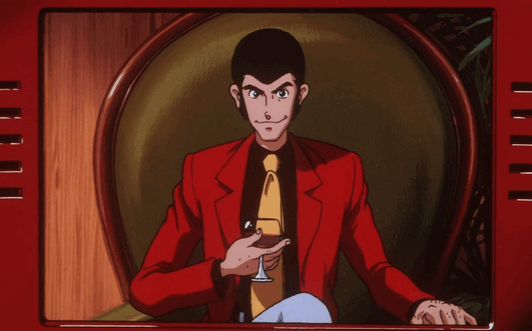
So, Lupin III! It’s a lot of things but before it was any of them, it was a gritty seinen manga by Kazuhiko Katō - far better known by the name Monkey Punch - serialised in a magazine called Weekly Manga Action starting in 1967. Here’s the opening spread...
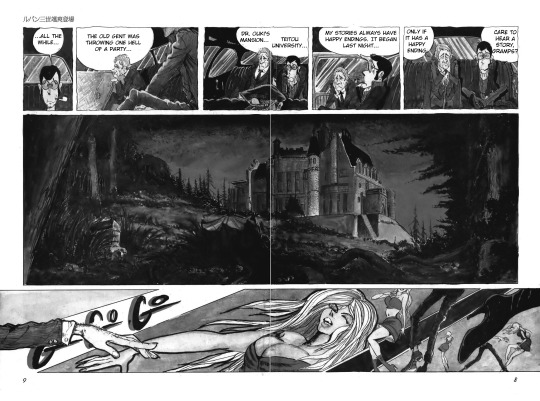
At this time, Monkey Punch was 30, meaning he’d grown up through the second world war, starting his career in comics in junior high where he competed with other artists in the school newspaper. His route into manga was via dōshinshi, then 4koma, and eventually working as an assistant to Naoki Tsuji on influential wrestling series Tiger Mask.
Lupin III took inspiration from, of course, Maurice Leblanc’s stories of gentleman thief Arsène Lupin, by way of a little James Bond. Many of the details of the plot were improvised. Femme fatale Fujiko Mine was originally to be one of a rotating cast of girls like in the Bond films, but that proved to be too much work, so she became a recurring character. Lupin’s samurai buddy Goemon was originally his enemy.
The Lupin manga has that strange horny energy that you tend to expect from 60s manga. It’s definitely still a comedy, but the kind of comedy where the first issue involves microfilm hid inside someone’s vagina and the second has a man almost wrongfully executed. The artwork is sometimes very detaile, but more often sketchy; its expressions are exaggerated, but it predates the codification of standard manga expressions. It’s shaded - in watercolours, I think, and markers. It feels very different from later manga characterised by ultra-precise illustration.
At this point in the history of manga, the waves of gekiga were beginning to be felt. So far as I’m able to tell the distinction goes, Lupin falls outside the (later-defined) line between ‘gekiga’ and ‘manga’, but there was definitely a feeling that more ‘serious’, dramatic stories were coming in. Original flavour Lupin is less ‘thief with a heart of gold’ and more ‘horny trickster’, a much more amoral character.
The manga introduces at first the cat-and-mouse pair of Lupin and Inspector Zenigata, perpetually a step behind. It gradually introduces the rest of the recurring characters: rival thief Fujiko the sexy girl full of cunning plans; Lupin’s partner the gunslinger Jigen whose main trait is shooting really fast and accurate; samurai Goemon whose sword can cut anything, especially clothes.

So, the anime then! This is one of those nights where we’re leaning on Matteo Watzky, who’s provided a great deal of information on the production of the original Lupin TV series.
Lupin was only in serialisation for a year when esteemed animator Yasuo Otsuka left Toei in the midst of ongoing union struggles, shortly after the completion of Horus: Prince of the Sun on which he’d worked as animation director. (See Animation Night 70 for more on that!) Otsuka landed at A-Pro, one of a number of studios in the orbit of a company called Tokyo Movie Shinsha, to work on an adaptation of Lupin - at the time, intended to be a feature film under the direction of Masaaki Osumi.
In 1969 they finished a twelve-minute pilot film that steered close to manga in both design and sensibility. Monkey Punch himself provided some supervision. The pilot is a series of brief vignettes introducing the main characters of the manga, with a narrator describing their main traits and fashion choices before brief skits that mostly end in explosions. Its animation is impressively elaborate and stylish and does not look like much from the era, but producers balked at all the sex and violence, so it was retooled into a TV show. Otsuka and Osumi were pulled away to work on Moomin, and the staff shuffled around a lot - not for the last time.

Lupin finally hit TV in 1971, again under Osumi with Otsuka designing characters. It was going for something dark and dramatic by the standards of the time, in the vein of Ashita no Joe (c.f. Animation Night 95) or Star of the Giants. But Osumi’s manga-faithful take hit poor ratings, and when Osumi was unwilling to compromise, he was gradually squeezed off the project.
Instead, Otsuka brought in two of his protégés from the Toei days, recently hot off the collapse of Pippi Longstocking. You may have heard of them. They were of course Hayao Miyazaki and Isao Takahata - at this point an inseparable pair. Although they took over the series, they did a lot of it pseudonymously, and they would leave A-Pro down the line.
The series that resulted under their direction is known to fans as ‘Green Jacket’ Lupin, because (shockingly) Lupin wears a green jacket. It’s full of foreshadowing for Miyazaki’s later works. Osamu Dezaki, also working pseudonymously, directed a number of episodes as well in his distinctive style. Under their direction, the series became a lot lighter in tone, with a gleeful sense of chaos that would become the defining tone of later adaptations. It wrapped up after 23 episodes, with Miyazaki apologising for the stuff - but all in all it was a success, although not as much as the next one would be...
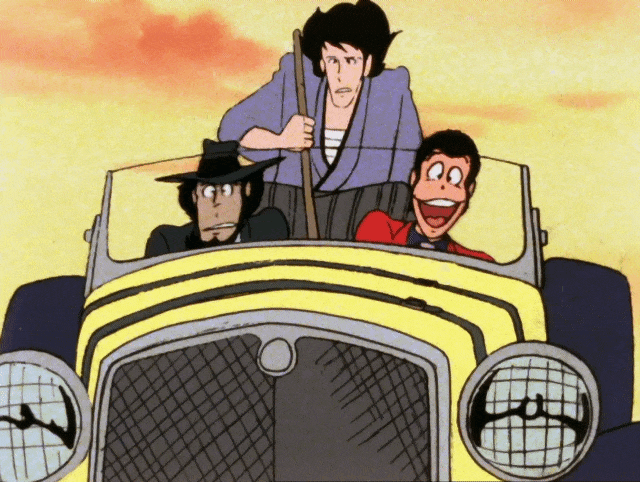
The second Lupin III adaptation, Lupin III Part II known as ‘Red Jacket’ Lupin, came six years later. In this time a great deal had happened. A-Pro had evolved into Shin-Ei and left the TMS orbit, and the other TMS satellites like Madhouse were also going their own way; in such uncertain conditions, and with their own director obsessed with his ultimately fruitless project to adapt Little Nemo In Slumberland, TMS sought to return to some of their various established licenses to make some reliable money.
A very long production that hit 155 episodes, the Red Jacket series is where Lupin really took off. It’s a mixed bag, with plenty of filler, but also several real standout scenes and episodes. In Watzky’s account, much of this has to do with the involvement of Oh Production, a subcontracting studio that would be a close ally of Takahata and Miyazaki right into the Ghibli days. Their star was Kazuhide Tomonaga, known for his work on Space Battleship Yamato, not to mention duelling Yoshinori Kanada to outdo each other in effects for the ridiculously elaborate finale of Galaxy Express 999. Tomonoga’s best moments would come after Miyazaki’s return, but we’ll come to that in a moment.
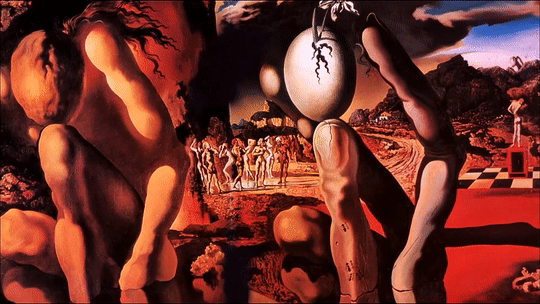
Red Jacket gave rise to the first Lupin movie, The Mystery of Mamo, which served as a vehicle to bring back a lot of the departed Shin-Ei animators into the TMS fold, and prior to Akira, it was the highest budget animated film in Japan with enormous ambitions for animation. Read Matteo’s article to get a sense of the different animators and studios shuffling around, but to summarise very briefly, it brought back most of the staff who had created the pilot film and they were able to bring much of the same energy. The film sets Lupin up against an immortal psychic billionaire, and it features an impressively varied animation style, with manga panels or a dreamlike psychic sequence when Lupin runs through a series of series of surrealist paintings.
Next came... guess what... The Castle of Cagliostro! Miyazaki’s back and he’s going to push his vision of Lupin as a romantic, kind-hearted character to a new level, once again in a green jacket. The film featured startlingly elaborate animation. The car chases cemented Lupin’s car as a staple of the series, the finale features the classic ‘I am a traditional animator and I want to flex’ setting of a gigantic clock full of cogwheels. It’s as fun and impressively shot a film as you’d expect from something headed by Miyazaki, although to Lupin fans, it is widely seen as a frustrating one, since it hews furthest from the ‘proper’ roguish characterisation of Lupin.

Cagliostro is also important for another reason: among otaku, the nascent lolicon movement fixated on its character Clarisse, much as Miyazaki himself had once fixated on the girl Bai-Niang from Toei’s The White Snake Enchantress. That’s a... complicated subject to explicate to put it mildly; I discussed it more on Animation Night 69. ‘Clarisse clones’ started popping up all over the place; Cagliostro was perfectly placed as one of the most impressive animated movies at the dawn of the otaku boom.
The TV series continued to run throughout all this, and the success of Cagliostro washed back in, with sudden character redesigns and of course, the two episodes directed by Miyazaki exhibiting all his quirks. Its scenes feel eerily preminiscent of Ghibli, even more so than Green Jacket, elaborate enough to seriously push the envelope on TV animation.
After all this, Lupin had been firmly cemented as a ‘classic’, nostalgic series in anime. Rather than a single canonical story, it was a group of iconic characters with a general setting and tone that was flexible enough to accommodate many more stories. This probably has a lot to do with its enduring presence: you certainly don’t have to have followed Lupin III from the very beginning to be able to jump in to one of the later installments and have a pretty good sense of what’s going on. There is a comfortable status quo, with Zenigata chasing Lupin who’s always one step ahead; from there, you can pull Lupin and the gang into whatever escapade you have in mind.
Through the 80s and 90s, TMS continued to produce Lupin films with a variety of directors. These generally follow the tone set out by the TV series and they’re a lot of fun. Monkey Punch himself actually directed one, being Lupin III: Dead or Alive, albeit reluctantly at the last minute! The 2000s saw TMS, facing budget limits, stripping production down to OVAs.

The most interesting change of direction came with Sayo Yamamoto, of Michiko and Hatchin and later, Yuri on Ice, who we covered back on Animation Night 36. Reading back her comments in the present, it’s like, wait, that Mari Okada?
In Yamamoto’s hands, the focus shifted from Lupin (though he’s still present) to Fujiko as the main character. The tone hews far closer to Monkey Punch’s manga: sex and violence, sure, but also escapades. It’s a hell of a ride, with all sorts of unexpected tones.
The animation, although clearly taking inspiration from the heavy lines of the manga, is most of all a Koike-ism - the deliberate and weighty way characters move, the use of black, the colour palette all scream ‘I just finished working on Redline for seven years’. Koike would end up staying with Lupin even after Yamamoto moved on, directing a trilogy of hour-long movies, Jigen’s Gravestone, Goemon’s Blood Spray and Fujiko’s Lie.
Last time we did Lupin, we watched one of the three, Goemon’s Blood Spray, last time, and honestly... well it’s a weird one! If Yamamoto’s take was able to preserve the comic chaos even with the darker content, Koike decided to fully go for a drama, with a very strange plot that sees Goemon going on a kind of spirit quest as he’s drawn into an intense battle with first gangsters and then a massive lumberjack guy. The long final battle of the movie sees the two gradually slicing bits off each other, meticulously animated in the way only Koike can (truly I never have seen a more carefully rendered sagittal section of the upper arm muscles), but at the time I found the film struggles to deliver the emotional stakes. It’s a long way from the rest of Lupin, and I’m curious but a little apprehensive to see what Koike did with the other two films.
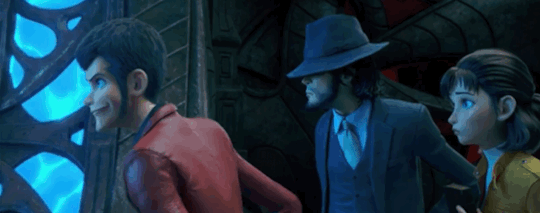
The other major development in Lupin films is the CG film Lupin III: The First (2019) dir. Takashi Yamazaki (his first animated film), featuring a distinctive stylisation that reminds me most of recent Chinese films like New Gods: Nezha Reborn. It’s a curiously bold departure; it caught my attention with clips of hyperchoreographed action scenes; it’s got a very broad, exaggerated style of movement that’s far from the norm for anime and a constantly roving camera. It’s kind of fascinating to look at, CG that isn’t trying to look like something else. It’s also a departure for the animators at Marza Animation Planet, whose previous works tended to be hyperrealist adaptations such as the 2013 version of Space Pirate Captain Harlock or Kingsglaive: Final Fantasy XV. That’s a lead to follow up on, actually. They would later come to work on the Sonic the Hedgehog films.
So, this movie. It’s evidently attempting to retool Lupin for the CG era, with tributes to the iconography of the old anime, such as remaking Lupin’s car in 3D and staging a chase with it; whether this attempt to ‘modernise’ will land I’m not sure. I don’t love their models for the female characters especially lol, they’re painfully Disney. The plot is a Lupin escapade vehicle with a dash of Indiana Jones, putting Lupin and the gang up against Nazi occultists. I don’t expect it to challenge much, but it does look fun.
So! What’s the plan for tonight?
Well, it’s basically the same plan as last time: another cross-section through the Lupin III series! We’ll hit the following notes:
the original Lupin pilot!
The Mystery of Mamo
Miyazaki’s two episodes of Lupin III Part 2!
the two parts of Jigen’s Gravestone
Lupin III: The First
Sound fun? Great! (Doesn’t sound fun? I’ll shoot you.) We’ll be starting early tonight; going live at 7pm UK time, and starting films after about 20 minutes. I’m going to try and keep the start of Animation Night in the 7-8pm range from now on - let’s see if we can rebuild this thing.
If you will, then: head to https://twitch.tv/canmom and get ready for some burglary, robbery, theft, and even perhaps a bit of larceny. See you in the theatre~
20 notes
·
View notes
Text
Its May 26th in japan.
Happy 85th birthday to the late Kazuhiko Katō (A.K.A Monkey Punch)

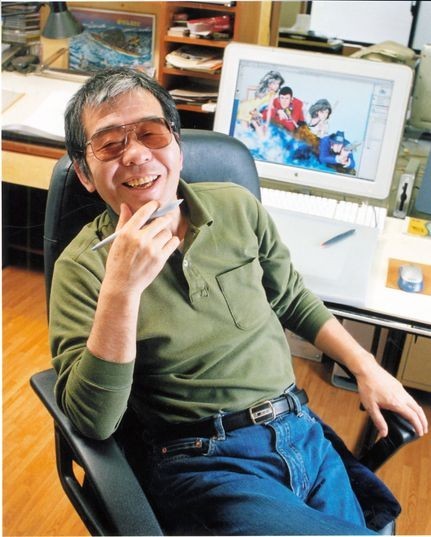
#lupin iii#jigen daisuke#lupin the third#inspector zenigata#goemon ishikawa xiii#fujiko mine#lupin the 3rd#yuji ohno#monkey punch
58 notes
·
View notes
Text

Shūkan Manga action [週刊漫画アクション] November 7, 1974. Cover art by Kazuhiko Katō [加藤一彦] A.k.a. Monkey Punch [モンキー・パンチ]
#vintage manga#漫画#manga#70s manga#gekiga#kazuo kamimura#retro manga#kazuo koike#old manga#小池一夫#モンキー・パンチ#劇画#漫画アクション#上村一夫
16 notes
·
View notes
Text
youtube
"Time Machine", segundo corte del segundo LP de Sadistic Mika Band, "黒船 Kurofune (“Black Ships”)", una fantástica muestra de glam rock japonés con un poco de Hawkwind añadido. Gran producción de Chris Thomas (Pink Floyd, Queen, Roxy Music, Badfinger, Sex Pistols, Pretenders, etc...).
El origen de Sadistic Mika Band (nombre que parodiaba a Plastic Ono Band) hay que buscarlo en Kazuhiko Katō, que se mudó a Kensington, Londres, en 1972 e impresionado por la floreciente escena glam rock formó un nuevo grupo en Japón para emular su estilo. La formación original incluía a Katō, Mika, el baterista Hiro Tsunoda y el guitarrista principal Masayoshi Takanaka, y grabó el sencillo "Cycling Boogie" en 1972 lanzado en Donut Records, el primer sello privado de Japón, fundado por Katō. Posteriormente, Tsunoda fue reemplazado por Yukihiro Takahashi, y el bajista Ray Ohara se unió a la banda. Esta formación completó el LP debut homónimo de la banda, lanzado por el sello Harvest.
Katō le pasó el álbum a Malcolm McLaren, quien en ese momento ya tenía una tienda con Vivienne Westwood, y éste a su vez a Bryan Ferry, a cuya banda Roxy Music la SMB telonearía más tarde en la etapa europea de su Siren Tour 1975-76.
0 notes
Photo

#fumetto#fumetti#manga#manga graphics#manga covers#covers#official artwork#ルパン三世#Rupan Sansei#Lupin Terzo#Lupin the Third#Lupin III#モンキーパンチ#Monkey Punch#加藤一彦#Kazuhiko Katō
17 notes
·
View notes
Photo
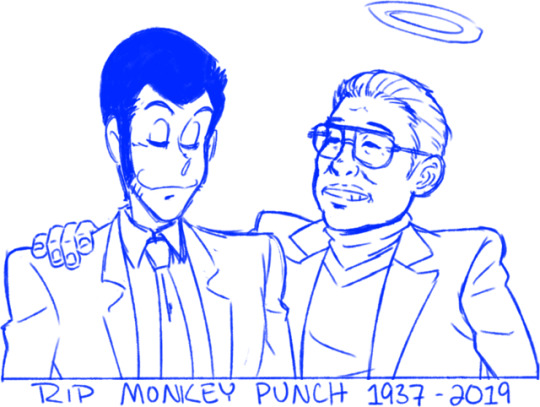
// A sketchy tribute.
385 notes
·
View notes
Text


In honor of the great Kazuhiko Katō (Monkey Punch) sudden passing, I’d thought I’d post some very cute Lupin The Third plush sets. All of these were released in the early to mid 90’s as UFO catcher prizes and I unfortunately couldn’t find proper set list pictures.
#Kazuhiko Katō#Anime#Lupin the third#Lupin III#Arsene Lupin III#Daisuke Jigen#Jigen#Goemon Ishikawa XIII#Goemon#Koichi Zenigata#Zenigata#Fujiko Mine#Plush#Toys#Stuffed Animals#Mod’s post
53 notes
·
View notes
Text
R.I.P. Kazuhiko Katō also known as Monkey Punch.
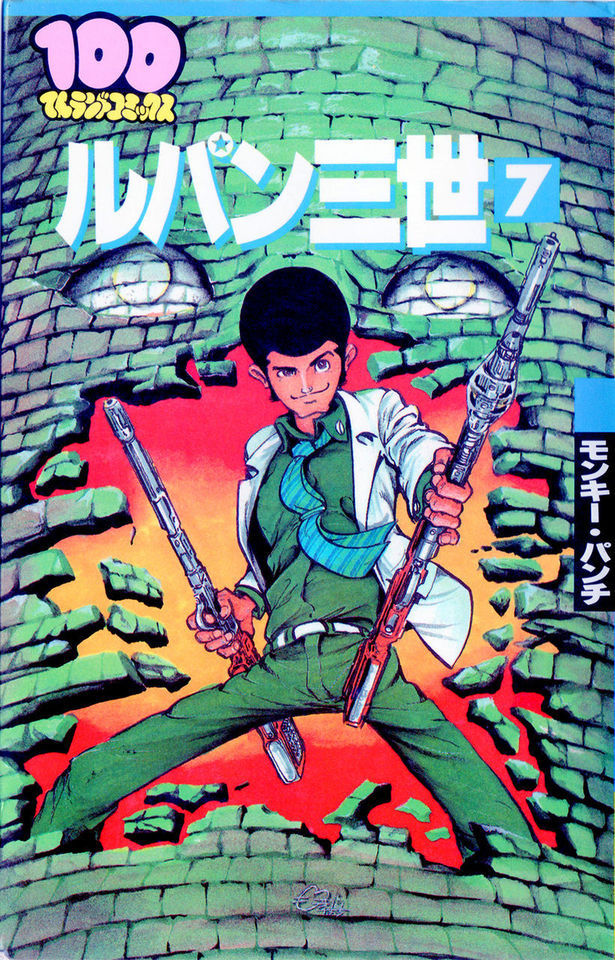
15 notes
·
View notes
Photo

Lupin The Third first full feature film
It is officially revealed that Lupin The Third: The First, the Lupin The Third franchise’s first full 3DCG feature film written/directed by Takashi Yamazaki (Space Battleship Yamato, Stand By Me Doraemon), is set to be released in Japan on December 6, 2019. It will be the anime franchise’s first theatrical feature film in 23 years since Lupin The Third: Dead or Alive in 1996.
映画『ルパン三世 THE FIRST』
12月6日(金)公開🎬
不朽の名作「カリオストロの城」から40年🏰
山崎貴による誰も見たことのない新たなルパン参上🎩
原作 #モンキー・パンチ 監督・脚本:#山崎貴#ルパン三世
映画公式サイトはコチラ❗️https://t.co/O5HnCpWVyn pic.twitter.com/3HB08HHIHX
— 『ルパン三世 THE FIRST』公式 (@lupin_3rd_movie) July 11, 2019
The film’s official website and Twitter also opened today with a teaser visual of Lupin the Third and a 60-second teaser trailer introducing the main characters in their 3DCG form. While no details about its plot has been revealed yet, the Twitter says, “It has been 40 years since the masterpiece ‘The Castle of Cagliostro.’ A new Lupin by Takashi Yamazaki that nobody has ever seen will appear.” Yamazaki also confirms on his official Twitter that he has been working on the project since three years ago.
#anime#CGI#classic#feature#Film#first full 3DCGI#Fujiko#Goemon#Jigen#Kazuhiko Katō#key visual#Lupin#Lupin the third#manga#Monkey Punch#movie#Space Battleship Yamato#Stand By Me Doraemon#Takashi Yamazaki#trailer#Zenigata#Anime
0 notes
Text
The wonderful folks at Discotek Media have announced their new future releases along with two more lupin movies !
-1996s animated film-
LUPIN THE THIRD: Dead Or Alive.



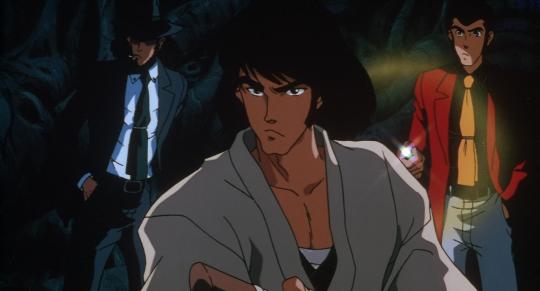
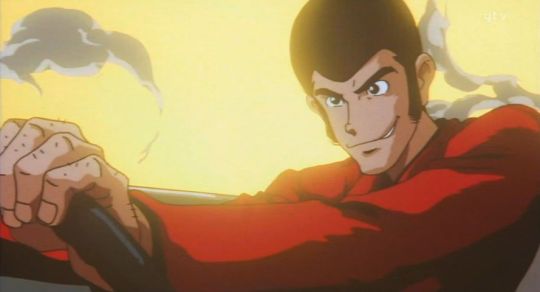

directed by creator himself Kazuhiko Katō (A.K.A Monkey punch)
Will include Funimations English dub
Will feature production art and an interview with monkey punch
Will release this 2022, more info to come
(Synopsis)
Lupin is after the mysterious treasure hidden on a drifting island in the small nation of zufu, where it is under the rule of the ruthless leader General headhunter. Upon arrival lupin learns why people don't enter or leave the island when he accidentally triggers its defense systems of nanomachines ?!?
lupin and cohorts must solve the hidden secrets behind the islands, its treasure and escape headhunters deadly game when he puts a bounty on the gang of thieves wanted DEAD OR ALIVE.
(Here's the trailer!)
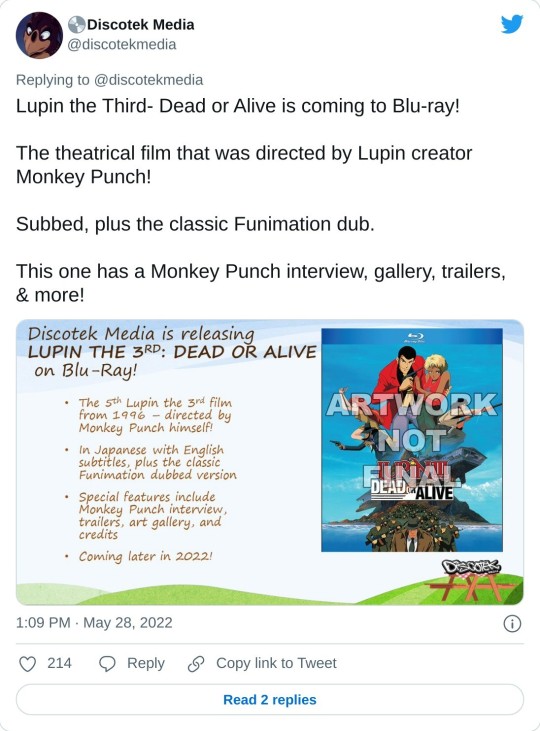
#lupin iii#jigen daisuke#lupin the third#inspector zenigata#goemon ishikawa xiii#fujiko mine#lupin the 3rd#yuji ohno#monkey punch
36 notes
·
View notes

